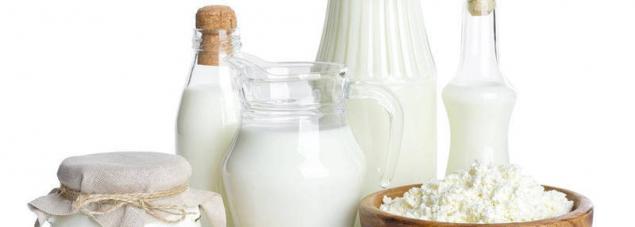Yogurt Emulsion
Making Soya Yoghurt. The Culture Cycle When you need more yoghurt, you can start again with your saved culture batch, and the process repeats. The culture can be used for several "generations" before becoming "tired". The culture becomes less effective over time, and should be discarded. Make Mozzarella Cheese. You will then need to buy some more shop- bought yoghurt, or use a dried culture, to start the cycle again.
Trust your senses. Good yoghurt doesn't smell of anything, and tastes fresh and mildly acidic.
If it ever smells or tastes 'off', discard it along with your culture batch, and begin with a new culture. Troubleshooting. Yoghurt hasn't worked? Check your culture was good - the starter yoghurt must be 'LIVE' and not all natural yoghurts are - check the packaging before you buy.
Don't miss out the sugar - it's needed for fermentation. Try leaving the yoghurt for longer, or raising the water level in the flask a little. Don't use sweetened soya milk, as the sweetener (often apple juice) might inhibit the fermentation. Try another brand of soya milk - some brands have thickeners or additives that affect fermentation (UK experience - Provamel Organic Unsweetened is consistently good). Yoghurt smells or tastes "off"? This is usually an old tired culture, or down to poor hygiene. Sometimes bad bacteria can taint the yoghurt if the friendly bacteria aren't strong enough to produce the acid needed for preservation.
Discard, and begin again. Strained Yoghurt. You can also take your soya yoghurt making a stage further, and make strained yoghurt.
Scald a square of muslin cloth 5. Suspend the sieve over a bowl. Pour in a litre of yoghurt, then gather up the edges of the muslin to cover the yoghurt. Put the bowl in the fridge for an hour or two, until the yoghurt has reduced by half, and the bowl contains the clear whey which has drained through (drink or discard it). The yoghurt may be thick and lumpy, so push it through the sieve into the bowl, or use a stick blender to make it really smooth and creamy. If you let the yoghurt drain for longer, until all the whey is gone, you'll make yoghurt cheese. You can weight the muslin on top of the yoghurt cheese to press out even more whey, and make a firm textured soya yoghurt cheese called qurd, which is good for making dairy- free cheesecakes.
See our Qurd demo here. Rich Yoghurt. You can make a thicker, creamier yoghurt by adding additional oil to the mix.

Soy milk (also spelled soymilk) is a plant-based drink produced by soaking dried soybeans, grinding them in water, boiling the mixture, and filtering out the residues. Cream Pemutih Badan Lightening Emulsion Produk Boyke & Co Untuk Memutihkan Badan / Tubuh, Ketiak, Selangkangan Dan Bagian Kehitaman Lainnya Pada Tubuh. Hand Crafted, Wood Fired, Neapolitan Pizza in Salem, MA 01970. Because a diabetes diagnosis is not a dietary death sentence.
Making Soya Yoghurt (Soy Yogurt) Soya Yoghurt is real live-cultured yoghurt, made from soya milk (soymilk). Yoghurt can also be made with some degree of success from. Rerum® emulsion implements a new carrier system. The compound of Chrondroitin, Oleic Acid, Vitamin D3 and Vitamin D2 provides a new functionality, that previously.
You can't add vegetable oil directly as it will tend to separate during fermentation, but you can add soyoli (oil and soya milk emulsion). Add a tablespoon of soyoli to your warm soya milk, before adding the sugar and culture, then proceed as normal. Make your soyoli with flax oil (flaxseed oil) to make an Omega- 3 enriched yoghurt.
Receta de Emulsión de patatas con pulpo hecha con Thermomix ®, un entrante que dejará a todos encantados. Realmente delicioso. Recordar la Emulsion de Scott de Aceite de Hígado de Bacalao solo puede resumirse en una expresión. ¡Guacalaaaa! La Emulsión de Scott ® ha sido por. Read sun tanning tips and advice, indoor tanning lotion reviews, and articles on the whole process of visiting a salon.
Other Plant Milk Yoghurts. Amongst those we've tested, soya is the best plant milk for making yoghurt, but you'll get varying success with other plant milks. Mostly what happens, if they work at all, is you'll get a large amount of clear whey on top of a reduced amount of yoghurt. This reduced yield makes them a little uneconomic for your everyday yoghurt, but for a special treat, the oat milk yoghurt in particular is especially creamy and delicious. You may need to strain these yoghurts (as instructions above).
Oat Milk (commercial oat milk): Low yielding yoghurt (less than half). Splits to curds and whey.
Taste and texture is good, sweet and not oaty. Strained oat milk yoghurt is amazingly creamy and delicious. Almond Milk (commercial almond milk): Low yielding yoghurt (less than half). Splits to curds and whey. Texture is a little grainy. Taste is nutty. Quinoa Mik (commercial quinoa milk): Low yielding yoghurt (less than a third). Splits to loose curds and whey and requires straining.
Texture, once strained is smooth and creamy. Taste of quinoa remains quite strong so this is less useful as a plain yoghurt. Rice Milk (commercial rice milk): Results are poor. Yield is probably only the original solids from the milk of around 1.
Tastes fine, but this is not really a yoghurt. Untested: Hazlenut Milk, Cashew Milk, Pea Milk (no longer available in the UK), Lupin Milk (not available commercially) .
